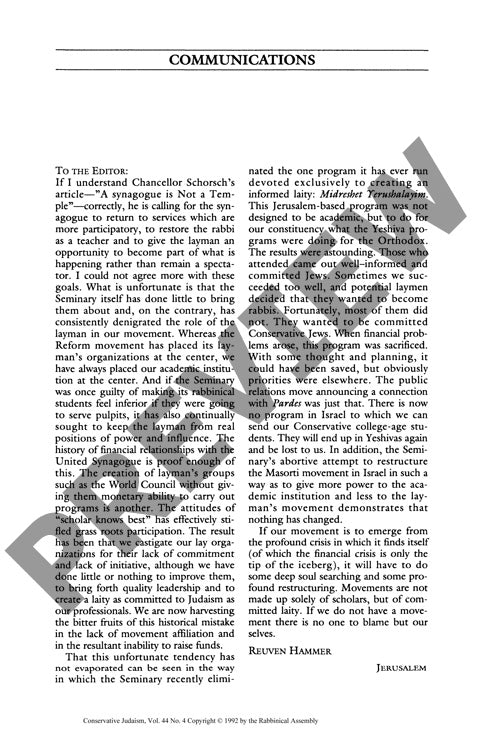Communications
Couldn't load pickup availability
The Conservative Jewish movement faces a fundamental tension between its scholarly aspirations and grassroots vitality, a conflict brought into sharp relief by the closure of Midreshet Yerushalayim in Jerusalem. Through analysis of correspondence between movement leaders regarding this lay education program's dissolution, deep institutional fault lines emerge between academic priorities and community engagement. While critics point to a pattern of marginalizing lay participation in favor of scholarly pursuits, defenders highlight various educational initiatives serving non-professional constituencies. Examination of documented exchanges reveals that the movement's current financial difficulties stem from deeper structural challenges - particularly the historical privileging of academic institutions over lay organizations, marking a distinct contrast with the Reform movement's emphasis on centralized lay leadership. The findings suggest that the Conservative movement's long-term sustainability requires fundamental restructuring to achieve balance between scholarly authority and meaningful lay participation, as denominational vitality depends not only on academic excellence but on nurturing committed lay constituencies. These dynamics illuminate broader questions about denominational governance and the distribution of institutional power between scholarly and lay spheres in religious movements.

More Information
-
Physical Description
-
Publication Information
Published 1992
ISBN
-
Publication Credits

